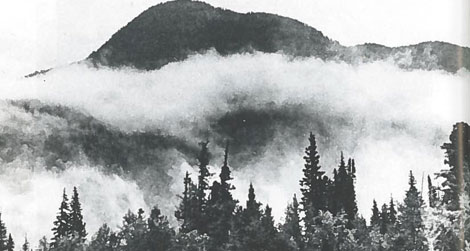
When a man named Karp Lykov decided that the S had Hit The Fan, he took his family and bugged out to the woods. They stayed out there, undetected, for over 40 years! Their experience has relevant lessons for preppers today.
Backstory

The Lykov family lived in an already-remote village in Siberia. They belonged to a persecuted offshoot of the Russian Orthodox faith called The Old Believers. The history of the Old Believers is fascinating in its own right, but not relevant to our prepper lessons. Old Believers sought peace and safety by exiling themselves to the far fringes of Russian civilization. Trouble found them anyhow.
During the 1930s, Stalin’s communists had been advancing their atheist dogma throughout their empire. In 1936, a Soviet patrol shot and killed Karp’s brother while he worked in a field. Karp himself had been beside him at the time, kneelling, so perhaps not visible to the patrol. His brother’s murder was the trigger event for Karp. Even their tiny village in Siberia was no longer safe.
Bugging Out
Karp rounded up his wife, Akulina, and their two children, Savin: 9 and Natalia: 2. They collected what they figured they would need and fled deep into the Taiga woods of Siberia. Traveling deeper and deeper into the rugged forest, they managed to disappear. Over the years, Akulina eventually gave birth to two more children out in the Taiga, far from any doctor or hospital. With the addition of Dimitri and Agafia, the family of six lived on in isolation. The two youngest children had never seen another human being that was not immediate family. That is, until 1978 when a helicopter crew employed by geologists discovered them.

Et Tu?
It is fairly common to read posts by modern preppers (of the Bug Out philosophy) who plan to bug out to the woods if the SHTF. They collect the gear they will take with them, and make plans for how they’ll hunt and fish and live off the land, safe in the obscurity of some large forest.
It is also somewhat common for other preppers (of the Bug In philosophy) to scoff at the notion of bugging out to the woods. Yet, the possibility of having to do so can never be strategized down to zero. Some terrible trigger event may force anyone (even a Bug-In-er) to flee — most with nowhere to flee to.
Survival Gear, 1936
When the Lykov family fled, what did they take with them? A partial list can be reconstructed from descriptions in various articles about the Lykovs. They took a couple of steel kettles, an axe (apparently), some knives, the clothes on their backs, a crude spinning wheel, parts for a simple loom, some seeds, prayer books and the family Bible. There were probably other miscellaneous bits, too.
DIY Clothing
The clothes they fled with eventually wore out to the point that patching was of no use. One of the types of seeds they brought with them were hemp seeds. That variety of hemp was used for fiber. They processed the hemp stalks into fibers which Akulina spun into yarn with her simple spinning wheel. She then wove her hemp yarn into a crude but serviceable fabric that the geologists described as “sack cloth” — i.e. burlap. The Lykovs made their own clothes.
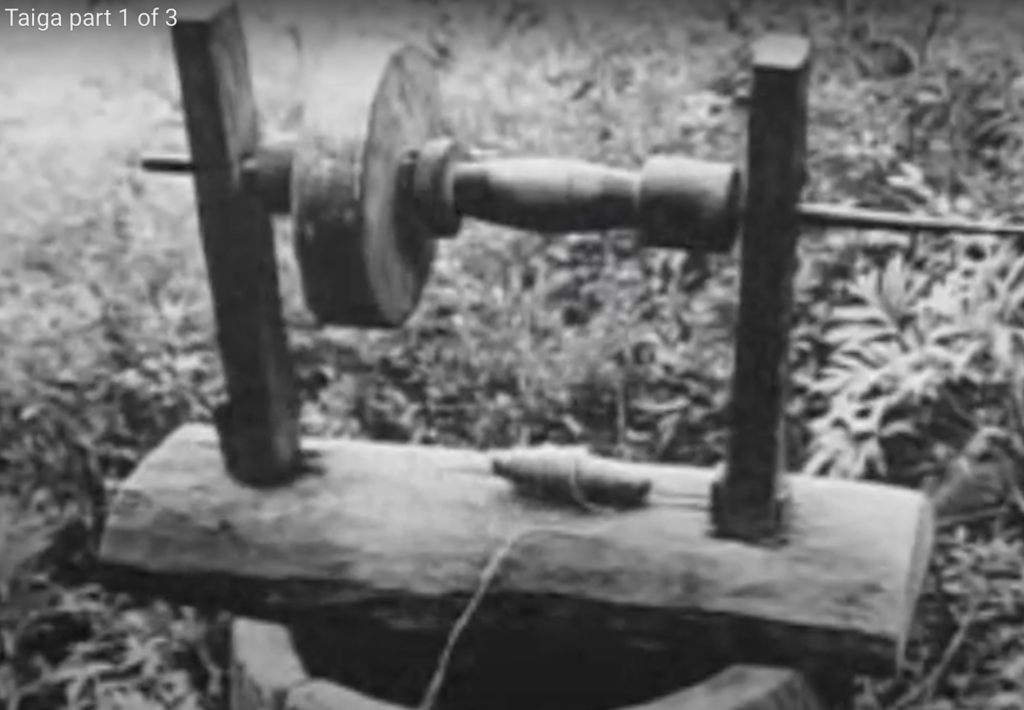
Shoes presented a different problem. When the leather shoes they bugged out with had worn out beyond usefulness, they had to fashion new footwear from birch bark. As much as possible, they went barefoot — even in winter.
Precious Metals
After twenty years of use, the steel kettles they fled with had worn out and rusted through. They had no way to make new steel. Dimitri fashioned baskets and containers out of birch bark in which to store their crops. Cooking with birch bark pots was difficult. You couldn’t put them on the fire. While no articles described how they cooked with bark pots, it may have been similar to how pre-contact Native Americans cooked. Rocks heated in a fire would be placed, one by one, in the container of water until it was heated to boiling.
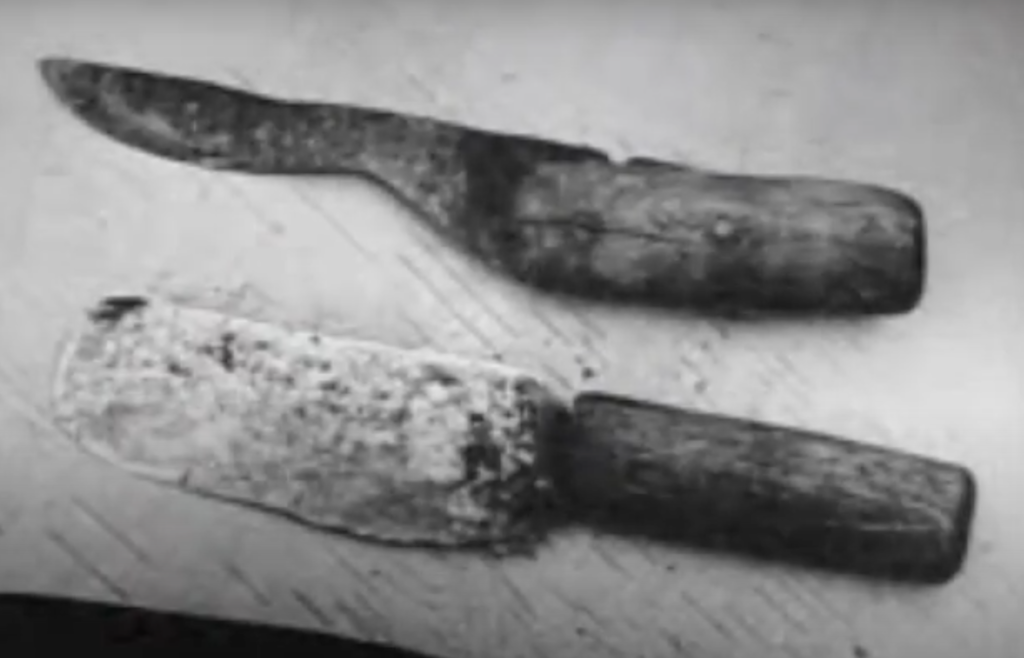
The knives they carried had been sharpened so many times over the 40 years, that there was not much left of them. While I found no photos of the Lykovs’ axe, it must have been similarly worn away from decades of chopping firewood and processing logs for their home.
The Edge of Starvation
The forest provided abundant food during the brief summer — pine nuts, berries, greens. The winters, however, were over six months long. The Lykovs’ garden (itself carved out of the forest on the side of a mountain) had to provide everything they would eat between the first frost of fall and the last frost of spring.
They grew potatoes as their staple crop – drying baskets full of potato slices to store for winter. They grew carrots and other vegetables, as well as rye and, of course, hemp, both for yarn fiber and the edible seeds. Their regular meal was potato patties, enhanced with rye meal and hemp seeds.
During summer, they fished in the river. They ate meat only rarely, as they had no gun (How long would a supply of bullets have lasted?). They had no bow. Nor did they fashion any spears. Instead, Dimitri (the family’s hunter) would dig pit traps or simply pursue his prey — sometimes for days — until it dropped from exhaustion. Then, the family would have a brief treat of meat and get animal skins.
Binge and Die, or Save For Seed?
The urge to allay hunger was so strong and so common that almost every winter they would hold a family meeting to decide if they should simply eat everything they had stored in one satisfying binge, or continue to be hungry and save some for seed.
There’s something to be said for the human will to survive. Every year, they decided to stay hungry and save the seed for spring planting.
Disaster and Recovery
Forest animals would occasionally raid their garden and devastate the crops the family needed to survive the winter. In 1960, there was a hard frost and snow in June. Everything newly sprouted in their garden was killed. That year, the family ate tree leaves and bark. Akulina did not eat, to ensure that her children had food — such as it was. She starved to death in February 1961.

That summer of 1960, there was a lone survivor plant in their garden. One stray rye seed had escaped the hard freeze and sprouted. The Lykovs built a fence around the slender grass blades and guarded it, lest mice or squirrels devour their only crop plant. In the fall, that single grain of rye developed a head with 18 grains. These, the family saved and planted the next spring. From that single grain, they painstakingly rebuilt their rye crop.
Discovery
In 1978, a helicopter pilot was scouting for places he might land some geologists when he spotted a clearing in the pine and birch forest. It was covered with parallel rows in the earth. It was clearly a garden tended by people — in a place everyone thought was completely uninhabited.
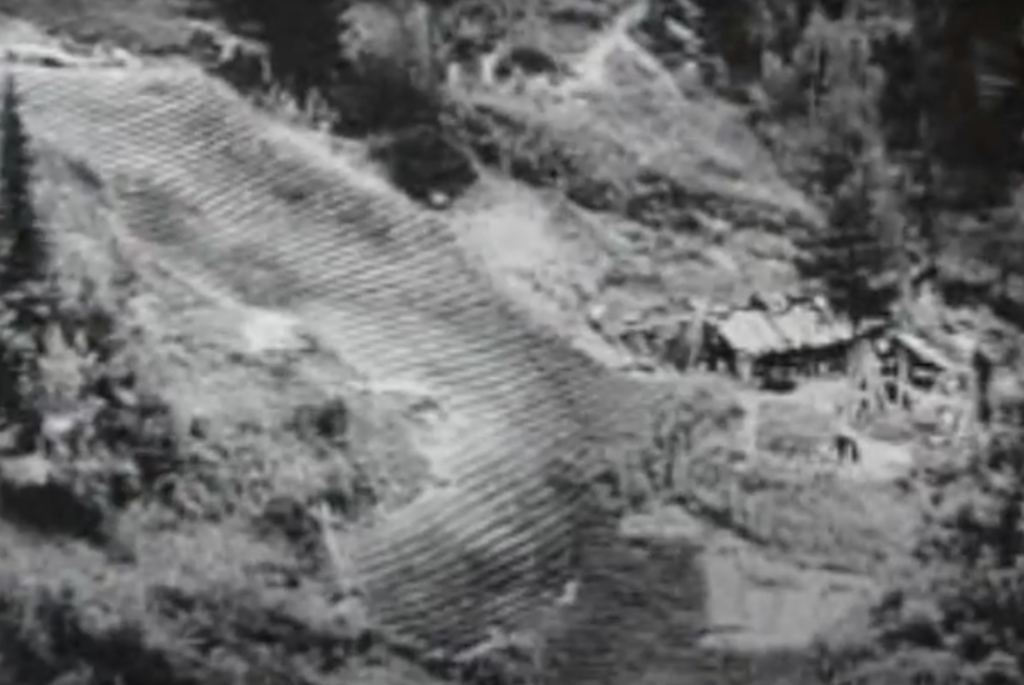
The geologists trekked in on foot to investigate. They found a crude log hut and a family of five. The Lykovs resisted being rescued. They felt no rush to embrace the modern world. Eventually, they did come out and experience a bit of the modern world at the geologists’ camp. It was not a rosy ending.

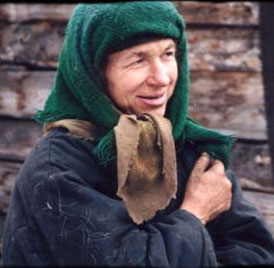
Three of the four children died within a couple of years of their discovery: kidney failure and pneumonia. Karp died ten years later. The youngest, Agafia, then 45 years old, decided to go back to her remote Taiga homestead, living the life of a hermit. She was entirely unimpressed with modern cities. As of mid-2019, in her mid-70s, she was still living on her mountain. People would visit her, bringing her supplies (even some goats) and news from the outside. She complained of growing old and weak but still refused to leave the Taiga she had been born in.
Lessons and Questions for Today from the Lykovs’ Experience
Packing List — What would you take when you Bug Out? How long do you think you’ll be bugged out to the woods? A month? A year? If you thought you might be out there for 40 years without seeing anyone again, would that change your list?
Wear and Tear — Think about replacements. Things wear out. If you’ve bugged out to the deep woods because things got THAT BAD, you won’t be able to buy replacements. What would you do if your cookware set wore out or was lost? What would you do for clothing after your bug-out ensemble wore out?
Subsistence Farming — Foraging and hunting can sustain you during the warm months while plants are growing and animals moving. How would you keep eating during the winter? More than likely, you would end up becoming a subsistence farmer. Are you planning for that? Apparently, Karp Lykov did.
Seed Saving — There was no store to buy new seeds from each spring. Everything the Lykovs grew came from seeds saved from their prior harvest. Seed saving is a simple skill but it was vital for Karp’s family.
Expect to Be Hungry — It was a yearly struggle for the Lykov family. While trying to stretch your stored food to last through the winter, you could not eat until you were satisfied. You would go to sleep each night, still hungry. When you are very hungry, you will eat things (like tree bark) that you would not consider food.
Expect to Work — Almost everything the Lykov family had, they made for themselves. Gardening was all manual labor. Think, digging with sticks. Hunting was all manual labor. Firewood, home repairs, fetching water from the stream: all manual labor.
Plain People Power — Karp and his family were not former SAS, Navy Seals, or survival experts. They were plain folk. There is some encouragement in knowing that ordinary people can survive alone in the woods for decades. One asset the Lykov family had going for them, was their knowledge of simple ways — growing hemp for fibers, spinning, weaving, farming.
This last point was what struck me most about the Lykovs’ experiences. Their pre-bug-out rural existence gave them experience in growing food and getting by with little, but they were not trained experts. They are an excellent example of how, with some basic skills and tenacity, you can survive.
Tenacity is part of our human nature (others call it stubbornness). It is a mindset that we can encourage and develop. Basic skills can be learned — growing food, making things by hand. With tenacity, skills, and some rudimentary items (kettle, knife, ax, seeds) even we modern folk could survive too.
———

Excellent article Mic. I think I’ll stick with bugging in. LOL.
Another great article, Mic. What a great story. And some important lessons.
I plan to bug In.
If I did have to bug out to the woods, I would not be thinking of 40 years. It just seems impossible. My BOB is already to heavy to pick up.
I think this family was the exception. And in such a harsh climate.
Surely, many have tried to bug out long term during crisis, and failed.
Hi Bill,
Yeah, I’m of the Bug In philosophy too. The Lykovs had an advantage, of a sort, in that they were living as poor farmer peasants before bugging out, so they were already doing many basic survival skills. For us, it does suggest that skills might be better than stuff, so far as BOBs go.